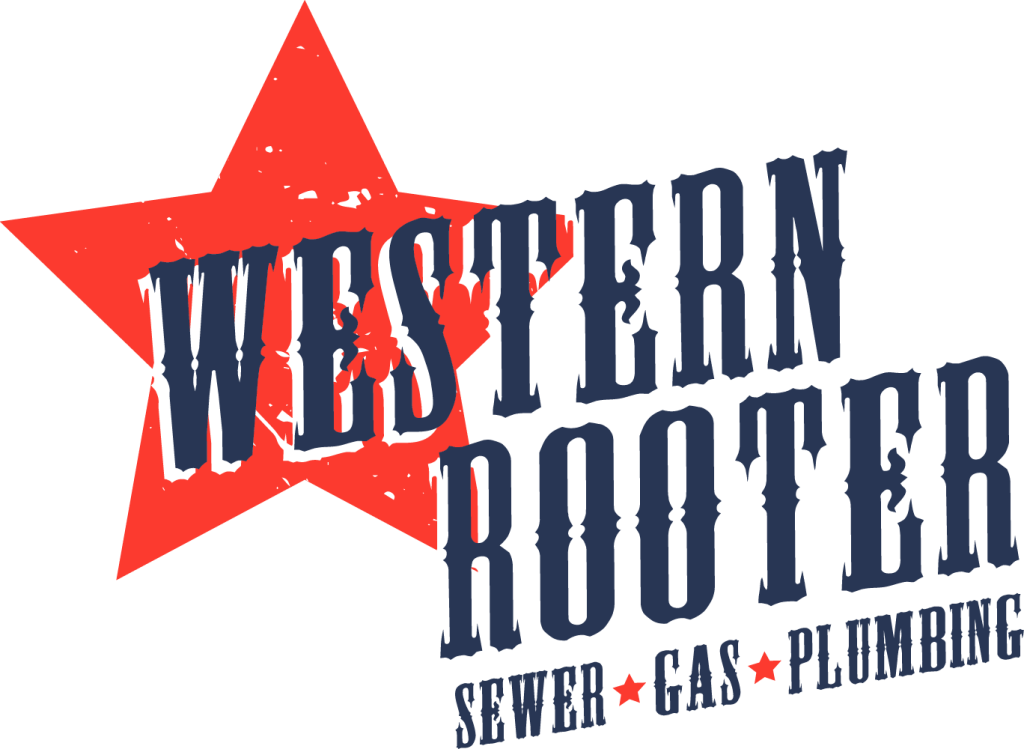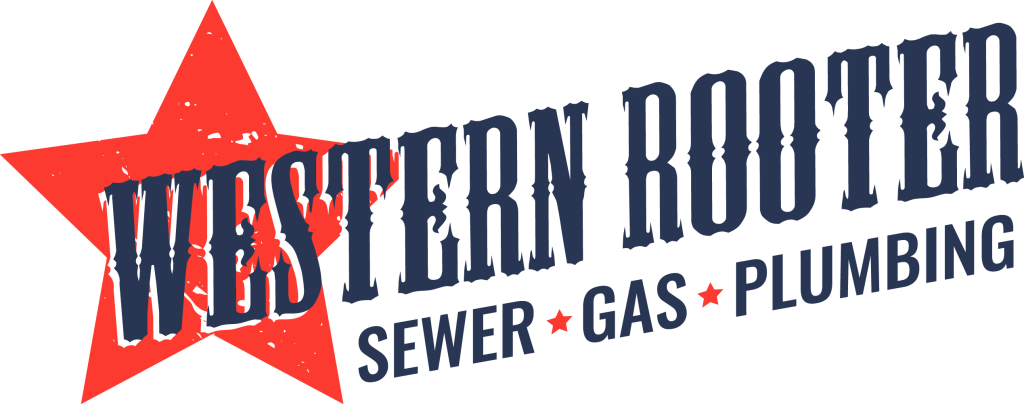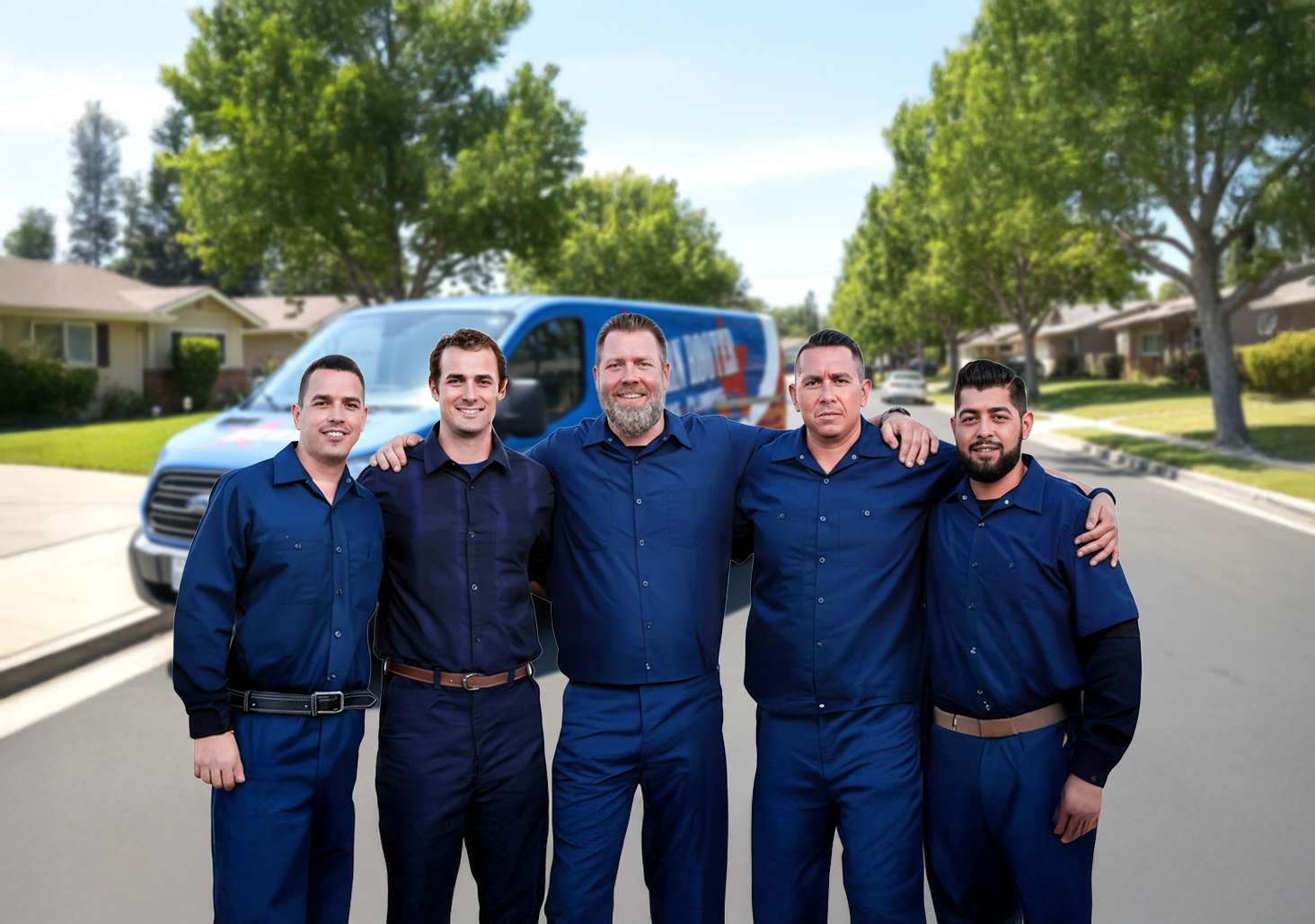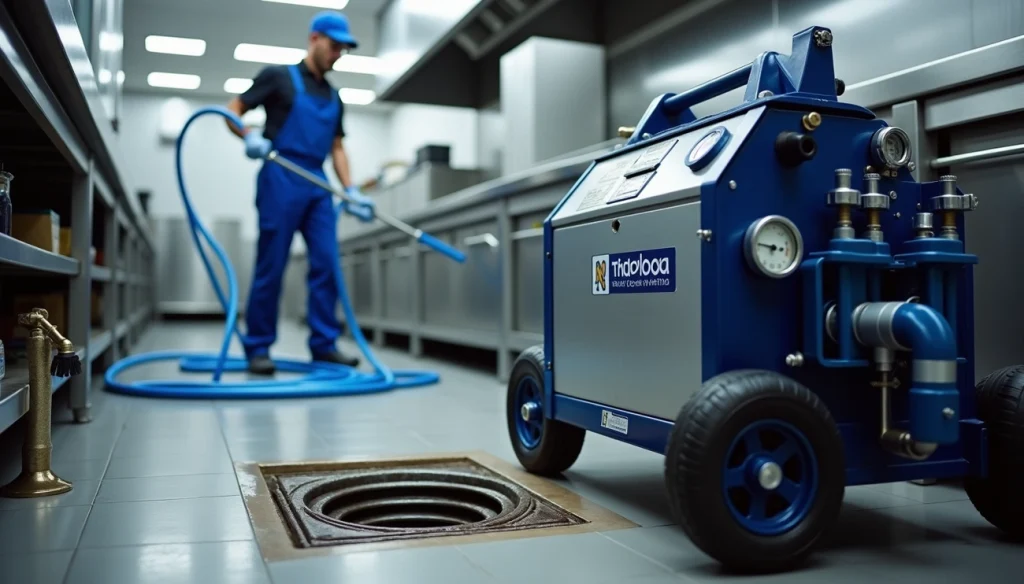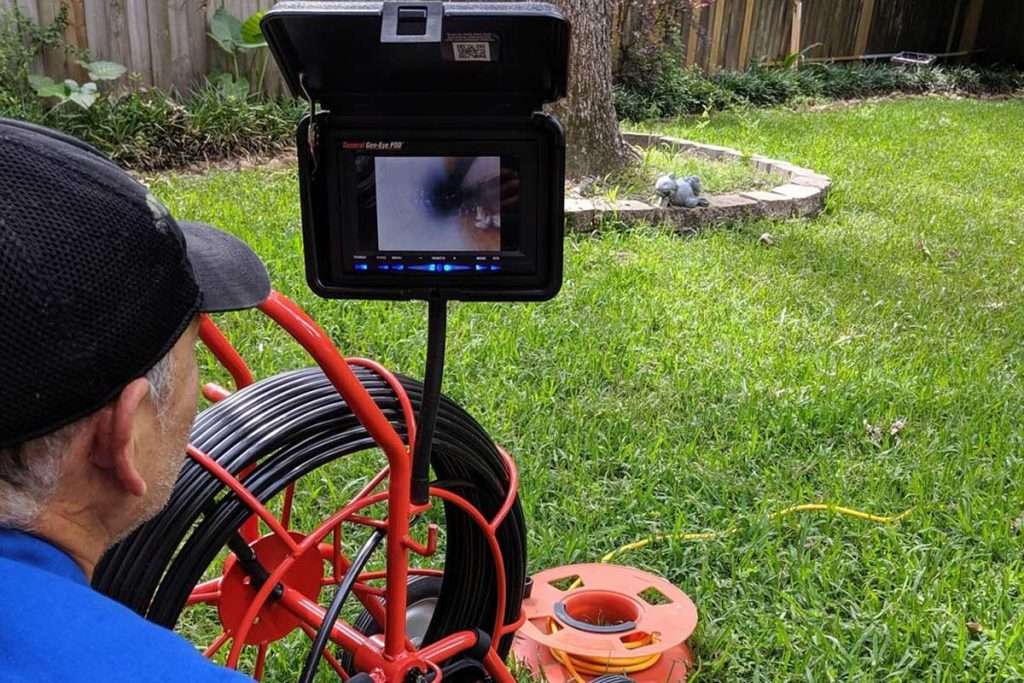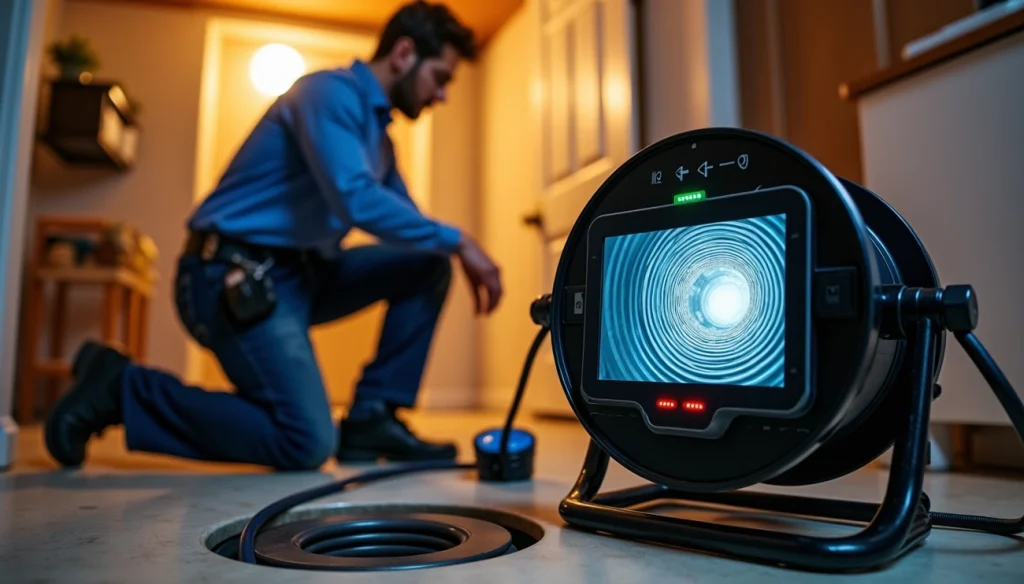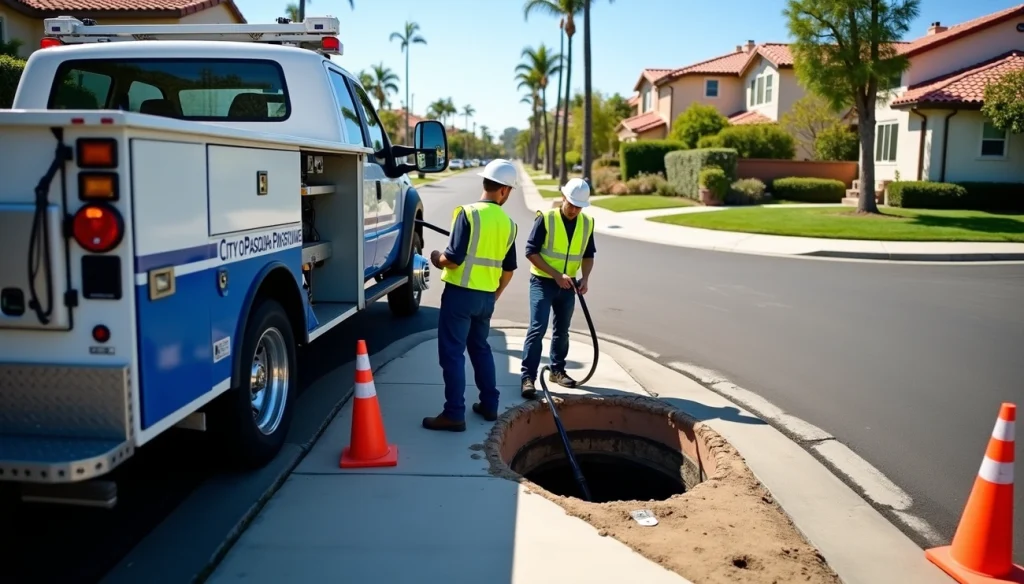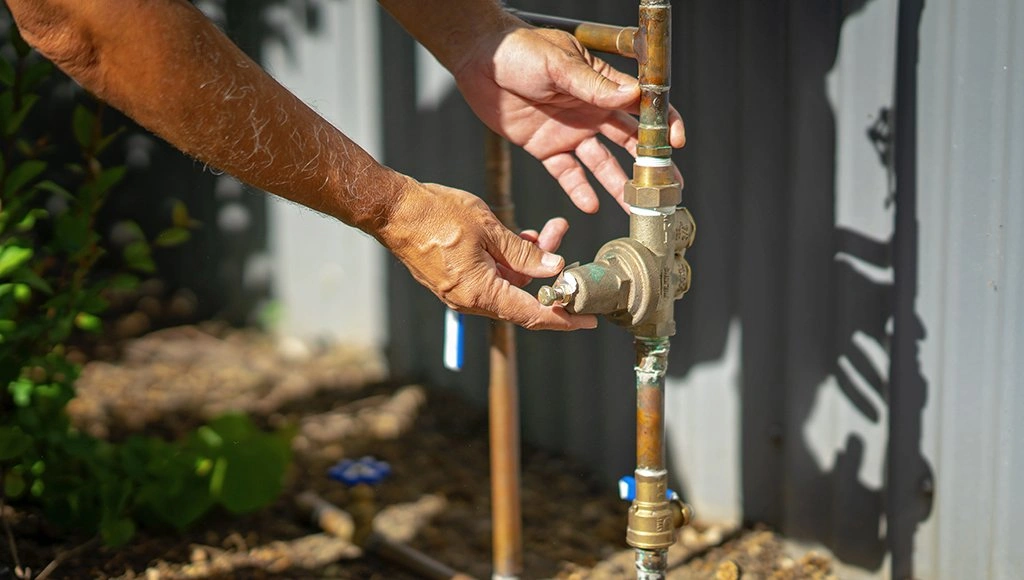Your home’s foundation could completely collapse from undetected slab leaks. These hidden water leaks beneath your concrete foundation cause silent damage that might go unnoticed for weeks.
Small slab leaks can substantially raise your water bills. The moisture creates perfect conditions for harmful mold growth that can trigger asthma and other respiratory problems. The leaking water slowly erodes the soil underneath your home and might create dangerous sinkholes. Running water sounds with no faucets in use or unexplained spikes in monthly bills are critical warning signs that need immediate attention.
You’ll learn to spot these subtle yet dangerous signs before they turn into expensive structural damage. Understanding a slab leak’s appearance and knowing how to identify one will help protect your property and your family’s health. Here are the warning signs you should never ignore.
Early Warning Signs You Should Never Ignore
Spotting slab leak signs early can save you thousands in repair costs and protect your home’s structure. Homeowners need to spot these subtle warning signs to keep their property safe. Let’s look at the most important signs you should never ignore.
Water bill increases with no explanation
A sudden spike in your water bills often points to a hidden slab leak. Your monthly statement might show unexpected increases even though your water usage stays the same. This needs quick attention. Environmental experts say household leaks waste nearly 10,000 gallons of water yearly, and many leaks stay hidden until major damage happens.
Here’s how you can spot a potential leak through your water bill:
- Compare your current bill with statements from previous months and the same period last year
- Check for gradual increases over several months that suggest a slowly worsening leak or sudden spikes that point to a major pipe rupture
- Rule out seasonal changes or new water-using appliances that might explain the increase
A small slab leak wastes up to 90 gallons daily, which drains both water resources and money. These hidden leaks get worse over time and lead to bigger water bills if left unfixed.
Warm spots or damp areas on floors
Your floors might show warm or damp spots – another clear sign of a slab leak. Hot water lines that leak under your concrete foundation make these warm spots as heat moves up through your floors.
Walking barefoot across your floors helps you find these spots. Focus on areas where hot water pipes usually run, like paths between your water heater and bathrooms or kitchens. An infrared thermometer gives you more accurate readings of floor temperature differences.
Damp spots on floors also point to possible leaks. Watch for:
- Wet carpet or always-soggy areas with no clear source
- Warped hardwood flooring
- Bubbling linoleum
- Dark or discolored patches on flooring materials
These moisture signs need attention if they show up far from plumbing fixtures or exterior walls where water might normally enter.
Musty odors or visible mold growth
Persistent musty odors or visible mold might be the most serious slab leak signs. Water collecting under your foundation creates perfect conditions for mold and mildew to grow—often within just 24-48 hours after water exposure.
These musty smells are earthy and damp, like wet socks or rotting wood. Regular household smells go away quickly, but these odors get stronger as moisture keeps seeping through tiny pores in your concrete slab.
Watch for these signs beyond the smell:
- Dark or greenish spots on walls, baseboards, or flooring
- More frequent allergy symptoms like sneezing, coughing, or itchy eyes
- Visible mold growth on carpets or along the bottom edges of drywall
Excess moisture from slab leaks makes indoor air more humid, which helps mold spores spread through your home. This creates health risks, especially for family members who have breathing problems or weak immune systems.
These early warning signs give you a chance to fix slab leaks before they damage your home’s structure or your family’s health. Call Western Rooter today to get a free estimate!
How to Tell If You Have a Slab Leak
Your home shows several warning signs when it has a slab leak. These detection methods will help you confirm if you have one after spotting early indicators.
Check for low water pressure across fixtures
A slab leak in your plumbing system often leads to low water pressure throughout your home. Water escapes from damaged pipes under your foundation and reduces the flow to your faucets and appliances. The pressure drops because water takes the path of least resistance—it leaks out instead of flowing to your fixtures.
Here’s how to tell if low water pressure points to a slab leak:
- Check multiple fixtures to see if the pressure drop affects your entire home
- Compare the current pressure to your normal levels
- Rule out other issues like municipal supply problems, clogged aerators, or faulty pressure regulators
Slab leaks cause consistent weak streams at multiple locations. The pressure becomes insufficient in showers, sinks, and other water outlets across your property. A plumbing expert points out, “If you can’t rinse the shampoo out of your hair in the shower or your dishwasher takes a long time to fill with water, you may have low water pressure”.
Listen for running water when everything is off
The sound of running water with no fixtures in use gives away a slab leak. Here’s how to check:
Turn off every water source in your home—all faucets, appliances, ice makers, and outdoor spigots. Create a quiet environment and listen near floors where water pipes run.
You might hear a subtle hissing or whooshing noise from water escaping pressurized pipes. This test works best late at night with minimal background noise. One homeowner heard “water running very faintly in the wall” as their first sign of trouble.
The water meter test also helps. After shutting off all water sources, watch if the meter moves even slightly. Any movement shows a leak in your system. “If there is no leak, the meter will have ZERO movement”.
Inspect for cracks in walls or flooring
Slab leaks often cause structural damage as water weakens your foundation. Water seeps into soil beneath the foundation and causes shifts that create visible cracks in:
- Interior walls (especially vertical or stair-step patterns)
- Baseboards with water damage
- Floor surfaces (tile, wood, vinyl)
- Foundation concrete (if visible)
These cracks start small but grow wider with time. Watch for sudden crack development—it usually means water damage rather than normal settling.
Your doorframes and windows might stick or stop closing properly. The soil movement from constant water leakage changes your home’s geometry.
Quick action after spotting these slab leak signs saves your home from major damage. Water escaping under your foundation causes more structural problems over time.
Contact Western Rooter today to get a free estimate!
What Happens If You Ignore the Signs
Your home and health face devastating consequences when you ignore slab leak signs. A simple repair can turn into an expensive nightmare as water escapes beneath your foundation and damage happens faster than you might expect.
Foundation damage and structural risks
Slab leaks slowly eat away at the soil beneath your home. This makes your foundation change, crack, or sink. Water dissolves the concrete filling or soil under your foundation and creates unstable conditions.
The weakened foundation makes walls change position or crack. Floors become uneven and doorframes warp. The situation can get so bad that your structure might collapse if water keeps leaking. One expert put it this way: water that carved the Grand Canyon “should have no problem excavating a few tons of dirt under your home”.
Foundation damage sets off a chain reaction of structural problems throughout your property. You’ll start to notice:
- Cracks appearing in walls and ceilings
- Uneven or sloping floors
- Spaces forming between exterior walls and the foundation
- Windows and doors that stick or won’t close properly
Health hazards from mold and mildew
We found that slab leaks create perfect conditions for mold growth. Mold can start growing within just 24-48 hours after water exposure. This happens because water from slab leaks soaks into drywall, carpet, and other materials that absorb moisture.
Mold can trigger several health issues, including:
- Allergic reactions like sneezing, coughing, and itchy eyes
- Throat irritation and breathing problems
- Asthma attacks in susceptible individuals
- Lung or brain infections in people with weak immune systems
On top of that, black mold often grows in hidden spots—inside walls or under flooring. This means it can spread everywhere before anyone notices. The CDC confirms that mold thrives anywhere moisture exists, especially around pipe leaks.
Escalating repair costs over time
The financial hit from ignoring slab leak signs gets bigger over time. A simple pipe repair can quickly turn into foundation reconstruction, mold cleanup, and major home restoration.
Slab leak repairs start at about $2,300 nationwide. This number shoots up when structural damage occurs. Cases with foundation problems need engineering inspections and construction crews. Your home could become a total loss.
Water bills can go through the roof—some homeowners’ bills hit $120,000 after ignoring a slab leak for just 30 days. Delays in fixing slab leaks affect your property value, insurance costs, and overall financial health.
Contact Western Rooter today to get your free estimate!
How Professionals Detect Slab Leaks
Professional plumbers use specialized equipment that DIY methods simply can’t match to find and confirm slab leaks. Your home might show warning signs, but these advanced techniques help us find the exact spot that needs fixing. This saves time and protects your property from unnecessary damage.
Acoustic listening devices
We used acoustic listening devices to catch the subtle sounds of water escaping from damaged pipes. These sophisticated tools increase the unique noise of water leakage and help us find the exact spot of a slab leak.
The equipment has:
- Ground microphones that can detect leaks through concrete and soil
- Acoustic disk plates for sensing water sounds through brick or stone
- Electronic listening sticks for pinpointing leak locations
These devices work because water creates a unique “hollow tone” at the time it escapes from pressurized pipes. Expert technicians can tell the difference between this distinctive sound and background noise.
Thermal imaging and pressure testing
Thermal imaging works differently from acoustic methods by detecting temperature changes from leaking water. High-quality infrared cameras show these subtle temperature differences and reveal hidden moisture under your floors or inside walls. This non-invasive method works exceptionally well to find slab leaks since water changes the temperature of materials around it.
Plumbers then run pressure tests to verify what they find. The process works like this:
- Isolating different sections of your plumbing system
- Pressurizing these sections to detect pressure drops
- Finding which sections show lower pressure, that indicates a leak
Hydrostatic pressure testing gives accurate results especially when you have small leaks that normal methods can’t spot. The best part is it won’t damage your property.
Fiber optic camera inspections
Professionals use fiber optic cameras inside your plumbing system for a direct look at pipe conditions. These tiny cameras on flexible cables move through pipes and send immediate video to technicians.
Camera inspections will give a:
- Visual confirmation of the leak’s exact location and severity
- Early warning of other potential issues
- Permanent record of pipe conditions for future reference
Most plumbing companies give homeowners a flash drive with all the inspection results.
Professional detection will give a precise target for repairs, which keeps costs down and minimizes disruption to your home. Contact Western Rooter today for a free estimate!
Best Repair Solutions for Long-Term Protection
Professional plumbers who detect a slab leak in your home need to pick the right repair method that protects your house for years to come. Your home needs permanent solutions that fix these hidden leaks and stop future damage to the foundation.
Pipe rerouting and repiping
Pipe rerouting stands as the best solution when you have serious slab leak problems. This method skips damaged pipes by putting new plumbing lines above the slab—usually through walls, ceilings, or attics. Homeowners who face repeated leaks can get peace of mind with complete repiping that removes problem areas permanently.
Rerouting costs more upfront than quick fixes but saves money over time because it stops future slab leaks completely. A typical repipe runs between $4,500 to $15,000 based on your home’s size and layout.
The biggest benefit jumps right out—you’ll never worry about under-slab leaks again. A specialist puts it simply: “Repiping is the best solution after experiencing a slab leak”. Most pros finish this job in just 1-2 days, so your daily routine stays normal.
Trenchless repair options
Homeowners looking for gentler solutions can turn to trenchless technologies that work really well:
- Epoxy pipe lining: Creates a new pipe within the existing one by coating interior surfaces with durable epoxy resin
- Pipe bursting: Breaks apart damaged pipes while simultaneously installing new ones through small access points
These methods need minimal digging and keep your landscaping and flooring intact. Less labor and materials for digging lead to optimized repairs that finish much faster than old-school methods.
Preventative maintenance for future leaks
Your home needs active protection from future slab leaks through smart prevention:
Regular professional plumbing checks help catch small issues before they grow. Water pressure needs careful monitoring and control to avoid pipe stress—most homes work best at 40-60 PSI. Smart leak detection systems with automatic shutoff features stop small leaks from turning into huge headaches.
Contact Western Rooter today for a free estimate!
Conclusion
Protecting Your Home From Devastating Slab Leaks
Slab leaks pose a serious threat to your home’s structural integrity and your family’s health. This piece explains how these hidden water leaks can silently damage your foundation while driving up your water bills. Without doubt, you should never ignore the warning signs – from unexplained warm spots on floors to the sound of running water when all fixtures are off.
Quick action on these warning signs can save you thousands in repair costs. A minor leak can quickly turn into foundation damage, mold growth, and extensive structural problems if left unchecked. Your quick response to these warning signs often determines whether you’ll need a simple pipe repair or complete foundation reconstruction.
Professional detection methods are a great way to get precise locations for needed repairs. DIY methods can’t match the accuracy of acoustic listening devices, thermal imaging, and fiber optic camera inspections. Pipe rerouting or trenchless repairs provide lasting protection against future leaks once the problem is found.
Your home is one of your most important investments. Protection from slab leaks needs watchfulness, quick action, and professional help when needed. Western Rooter’s experienced technicians can assess your situation and recommend the quickest way to fix it before small issues become major disasters. Call them today for a free estimate!
The subtle signs covered here give you the knowledge to spot potential problems early. Don’t wait until you face expensive repairs or health risks from mold exposure. Stay alert, take action when signs appear, and your home will stay safe and structurally sound for years ahead.
